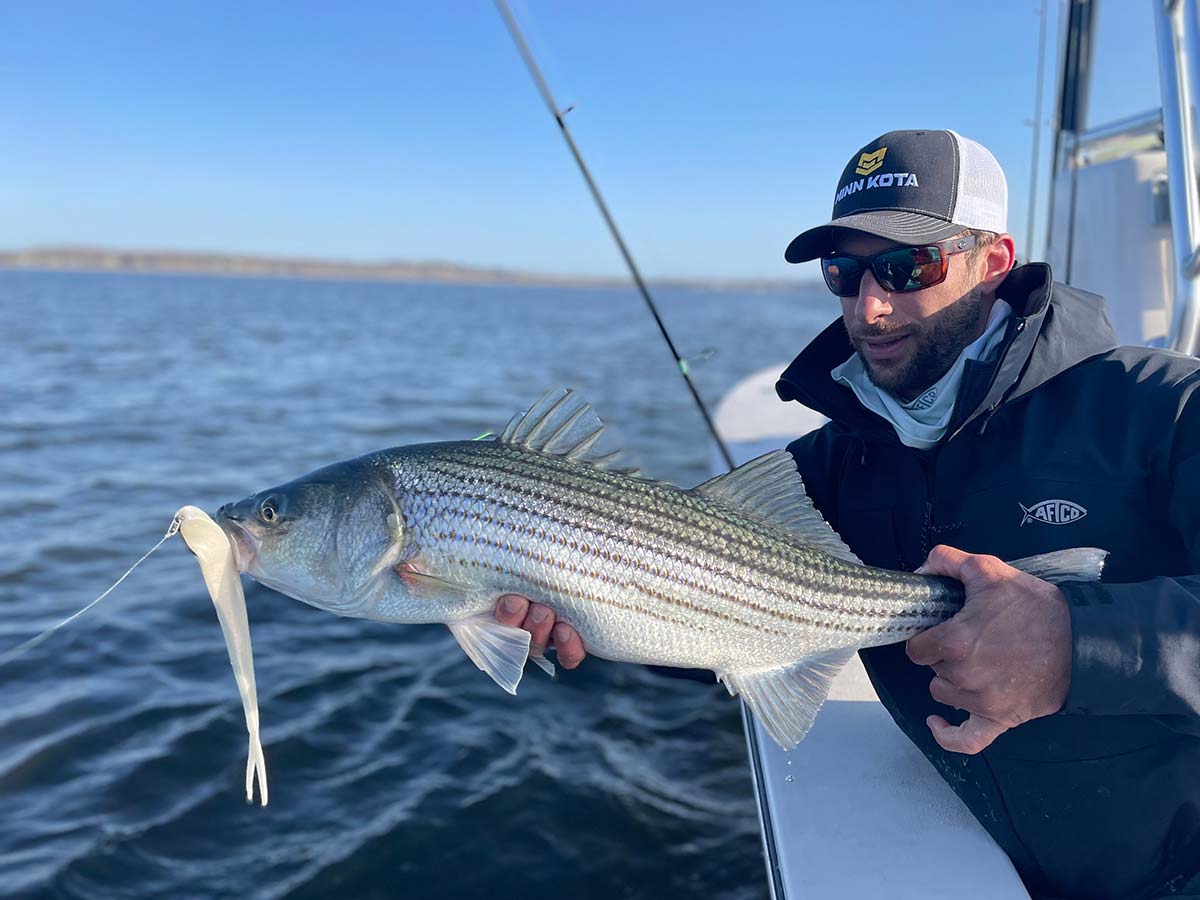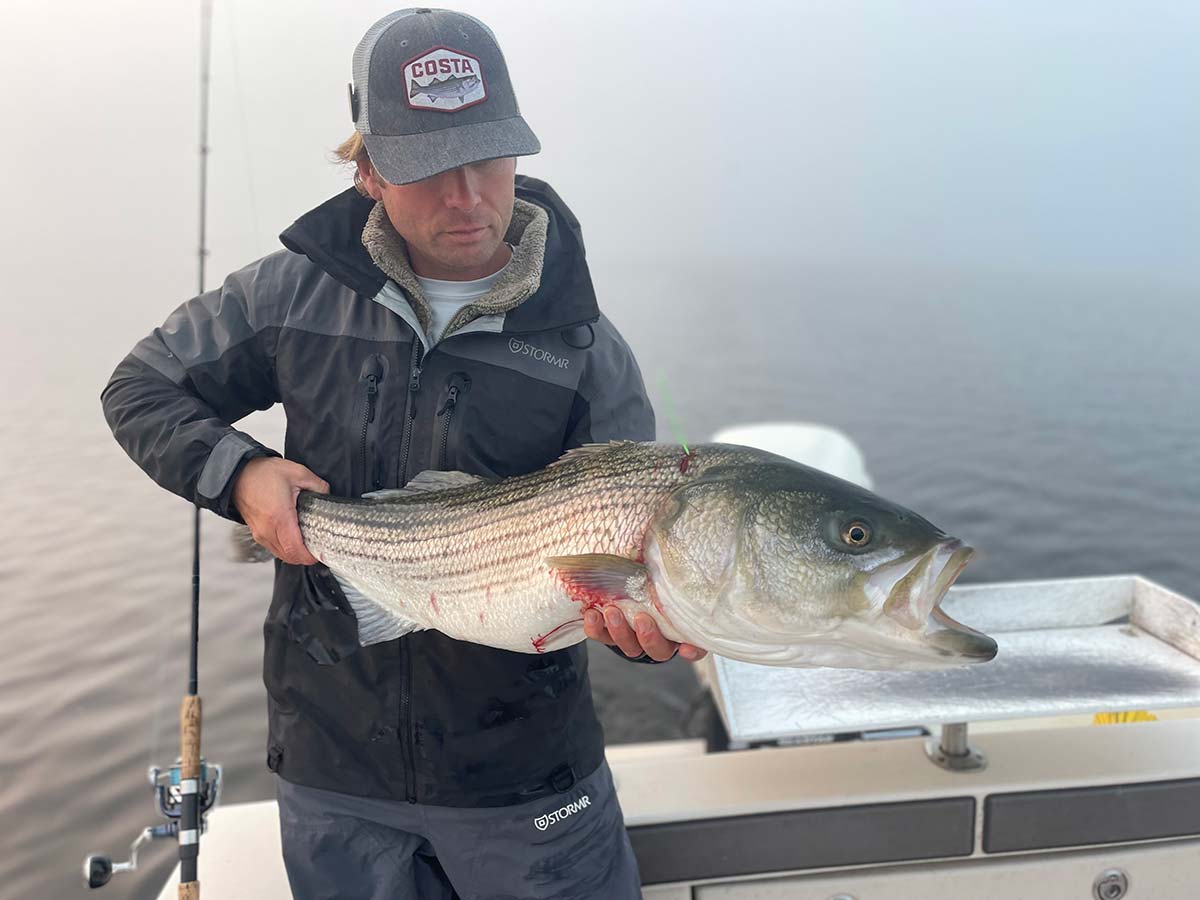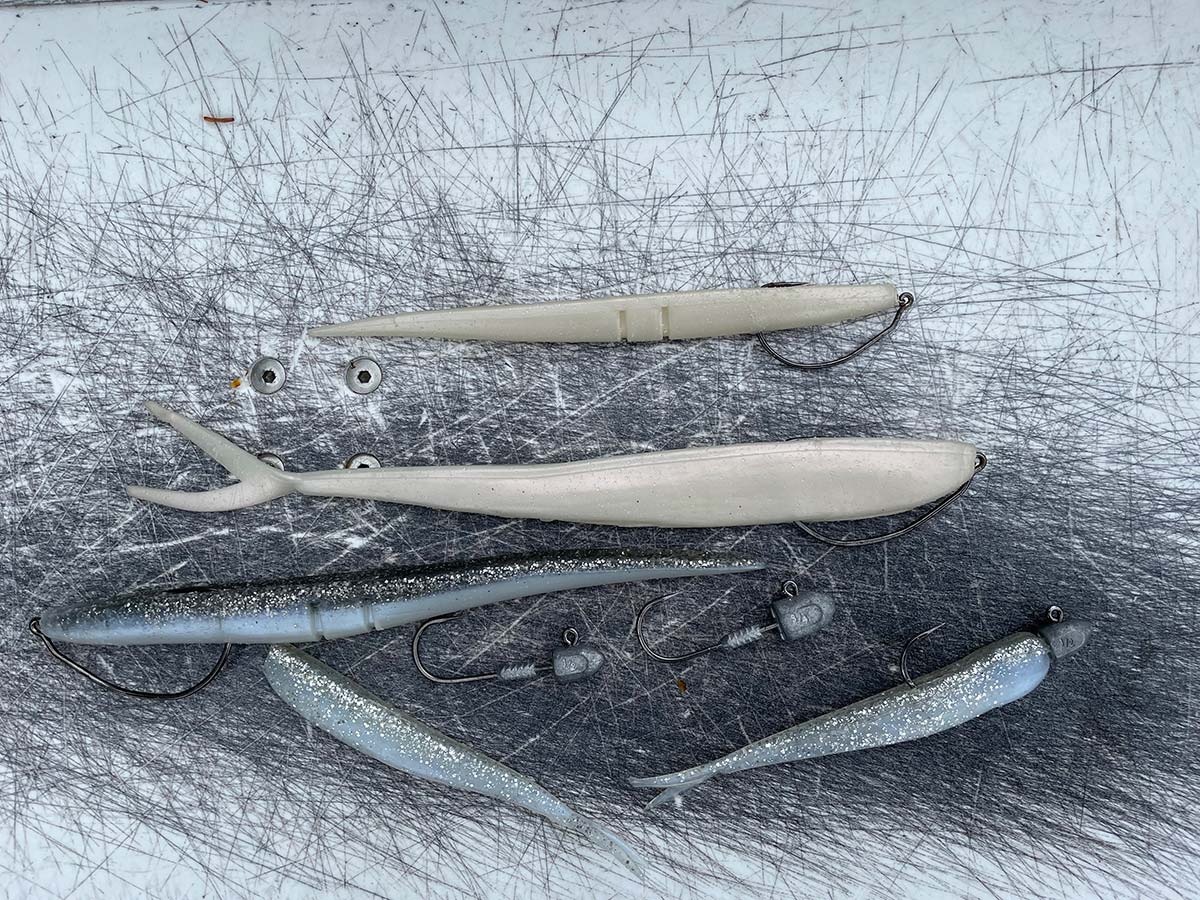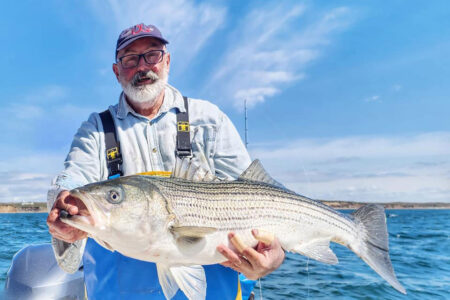
The versatile bait that draws strikes even when nothing else will.
If I was forced to pick one style of lure to fish, it would be soft plastics due to their versatility and subtle nature. Soft plastics can catch fish 365 days a year, they can be rigged and fished in a variety of ways to cover countless situations. Due to the fact that fish behavior and aggression changes on a daily and tidal basis, being able to switch up your techniques and presentations will result in more consistent catches.
You can fish soft plastics throughout the entire water column, from the surface to the bottom and everywhere in between. Soft plastics come in a wide variety of sizes from 3 inches to over 12 inches and can target anything from schoolies to trophies.
Unweighted Means Versatility
Striped bass, like many other fish, are “moody”. Sometimes they can be in a highly aggressive feeding state and annihilate anything that moves, other times you can throw the kitchen sink at them and they will show zero interest. The latter is more common. Oftentimes I will mark a massive school of stripers on my Humminbird Side Imaging and we do not get bit. This is my indicator that I need to switch up my tactics. I start by downsizing my tackle, a G Loomis E6x 844SF and Shimano Stradic 4000, loaded with 15-pound Power Pro and a 30-pound leader is perfect for casting 4- to 7-inch unweighted soft plastics. I prefer a straight tail lure such as a Lunker City Slug-Go. These small soft plastics rigged on a 4/0 Owner Beast hook will often draw strikes when fish are finicky.
The key to catching when fish are in a low aggression state is frequent changes in speed and direction. It is common for stripers to follow a lure, often right to the side of the boat and then turn away. By imparting side to side, non-linear action, you can get these fish to strike. This is similar to the walk the dog action that you impart when fishing a topwater “spook” style lure. In order to get the proper action you need to have a small amount of slack in the line in between each twitch, this allows the lure to “kick out” to the side. Speeding up and slowing down your retrieve speed is another way to draw strikes.
The last trick may also be the most effective maneuver of all, the intentional pause. Have you ever been working a lure, take your hand off the reel for a second to swat a bug or fix your hat and then, bam, you get a hard hit? This is no coincidence, stripers often hit on the pause. Most unweighted soft plastics are almost neutrally buoyant, or a very slow sink rate making the intentional pause incredibly effective. If it is a windy day or the current is very strong you can try using a hook with a small keel weight. Owner makes these hooks with a 1/16th to 3/8th ounce and they work very well.

Get Low
There are many times when fish will be holding in deeper water and tight to the bottom. The jighead and soft plastic combination is the go to in this situation. It is important that you match the appropriate size jighead, hook and soft plastic. I like the Z-Mann TT jighead as it has a collar on the hook to hold the plastic in place without tearing it. I typically fish a 3/8- to 1-ounce jig depending on current and wind speed. A 6/0 hook will pair well with 4- to 6-inch plastics, while an 8/0 hook pairs best with 7- to 10-inch baits.
I refer to this technique as a “swing bite” because you are casting the lure on a cross current angle, letting it settle to the bottom and then starting a slow enough retrieve speed that the lure is naturally “swinging” in the current. As you reel, this will create line drag resulting in the lure being pulled up in the water column. You can counter this by slowing down your retrieve and occasionally opening your bail and letting the lure sink back to the bottom. Once your lure is down current it is time to reel in and make a new cast. When executed properly, your lure should be approximately 3 to 7 feet off the bottom and not dragging. You can work the lure with an occasional pop of the rod and then letting the lure sink. Hits often come after the pop as the lure is sinking.
There are two styles of plastics that work well on a jighead. A split tail such as a Fin-S Fish and a paddle tail such as a Keitech. The paddle tail gives off more vibration than the split tail. Some days one is preferred over the other so it’s best to experiment until you find what’s best.
When fish are holding on deep water reefs, in 30 to 50 feet of water, vertical jigging can be an effective method. Locate a school of fish holding on deep structure using your sonar and start a drift just up current of the school. This will require the use of a heavier jighead. Keep in mind that you will need to compensate for the drag of a larger soft plastic with a heavier jighead.
To begin drop the lure to the bottom, you should be within a few feet of the bottom but not constantly banging the bottom. With the rod tip pointed at the water, snap the rod up quickly and then allow the lure to freefall and follow the bait back down to the water with the rod tip. It is important that the lure and rod tip descend at the same speed to allow the lure to freefall and the angler to feel the strike. The majority of the hits will come as the lure sinks back to the bottom. As the boat drifts the line will begin to scope out at an angle which results in the lure rising in the water column. Flip open your bail, drop back to the bottom and repeat. After some time you will need to reel up and drop back down in order to stay vertical.

Plastic Particulars
For colors I keep it simple, white is always a top producer. A darker colored back such as a blue/black combined with a lighter colored belly is also a good choice. More important than color is size and profile. I find that changing sizes depending on what the fish are feeding on can make a big difference. I find that 5-inch, 7-inch and 9-inch size soft plastics will cover the majority of situations that I encounter.
| CONTINUING EDUCATION |

If you want to learn more about rigging and fishing soft plastics for stripers, scan this code to watch a video Capt. Mike made for us, and follow the links in the video description for an even deeper dive into the rigging process. |
Lastly, soft plastics are very sensitive to resistance in the water. If the boat is drifting too quickly, your bait will drag and become less effective. Fishing from a stationary position versus drifting will impact the lure’s action, too. If you are fishing stationary you will need to cast cross current and fish different angles to find the best presentation. If you are drifting, casting downwind is best so you are not dragging the lure as the boat is being pushed by the wind. Using a drift sock can help in some situations to control drift speed.
The absolute best boat control is to fish soft plastics with a trolling motor. I often use my Minn Kota trolling motor’s Autopilot feature to control the drift speed and allow the lure to look most natural. Certain situations it is best to fish from a stationary position and other times you want to be drifting with the current. And only experimentation or experience can reveal these answers.
Soft plastics are a valuable asset to anyone that fishes for striped bass. There’s so much focus on plugs and live bait and not enough anglers are utilizing soft plastics. Set your mind to incorporating them in your personal arsenal and I bet you’ll find yourself going soft more and more.



